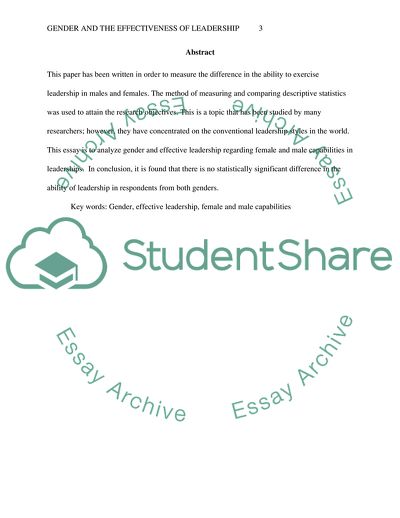Cite this document
(Gender and the Effectiveness of Leadership Research Paper Example | Topics and Well Written Essays - 3000 words - 1, n.d.)
Gender and the Effectiveness of Leadership Research Paper Example | Topics and Well Written Essays - 3000 words - 1. https://studentshare.org/gender-sexual-studies/1803196-gender-and-the-effectiveness-of-leadership
Gender and the Effectiveness of Leadership Research Paper Example | Topics and Well Written Essays - 3000 words - 1. https://studentshare.org/gender-sexual-studies/1803196-gender-and-the-effectiveness-of-leadership
(Gender and the Effectiveness of Leadership Research Paper Example | Topics and Well Written Essays - 3000 Words - 1)
Gender and the Effectiveness of Leadership Research Paper Example | Topics and Well Written Essays - 3000 Words - 1. https://studentshare.org/gender-sexual-studies/1803196-gender-and-the-effectiveness-of-leadership.
Gender and the Effectiveness of Leadership Research Paper Example | Topics and Well Written Essays - 3000 Words - 1. https://studentshare.org/gender-sexual-studies/1803196-gender-and-the-effectiveness-of-leadership.
“Gender and the Effectiveness of Leadership Research Paper Example | Topics and Well Written Essays - 3000 Words - 1”. https://studentshare.org/gender-sexual-studies/1803196-gender-and-the-effectiveness-of-leadership.


